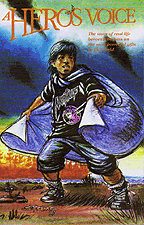Time catches up with Hopi-language saviorEmory Sekaquaptewa was at once a visionary and a realist—a combination few are blessed with, but a paradoxical trait that produced a lasting legacy.
Not everyone can look back and say they wrote their nation's first dictionary and helped revive a language that faced extinction, but those are just a few of the things he accomplished in his lifetime.His greatest achievement:
One of Sekaquaptewa's largest accomplishments was a 30-year project that resulted in the Hopi language's first dictionary. The underlying drive behind all of his endeavors—his law degree, his 34 years of university teaching—was to preserve the Hopi way of life.
"He was always putting down words on little cards and after a while he decided it would be a good idea to put those together into a dictionary," Krutz said.His work to continue:
Healy is in charge of fundraising for Sekaquaptewa's last project, a children's book that will teach the Hopi language to the next generation.
The Hopi Children Workbook is designed to teach visual word association, much like the popular Richard Scarry books, only with a Hopi twist.Comment: If the Hopi are doing a children's book with pictures, why not a comic book?









